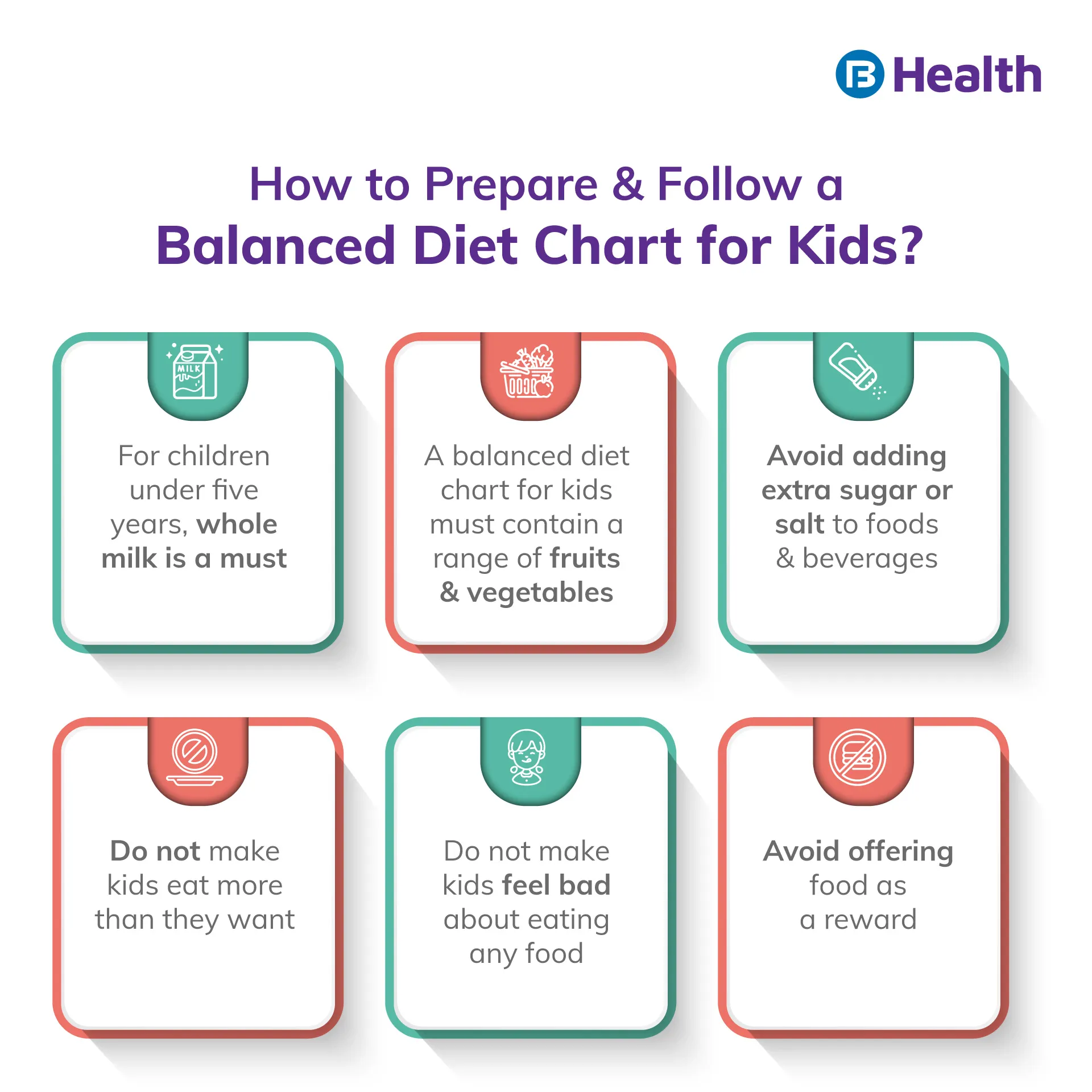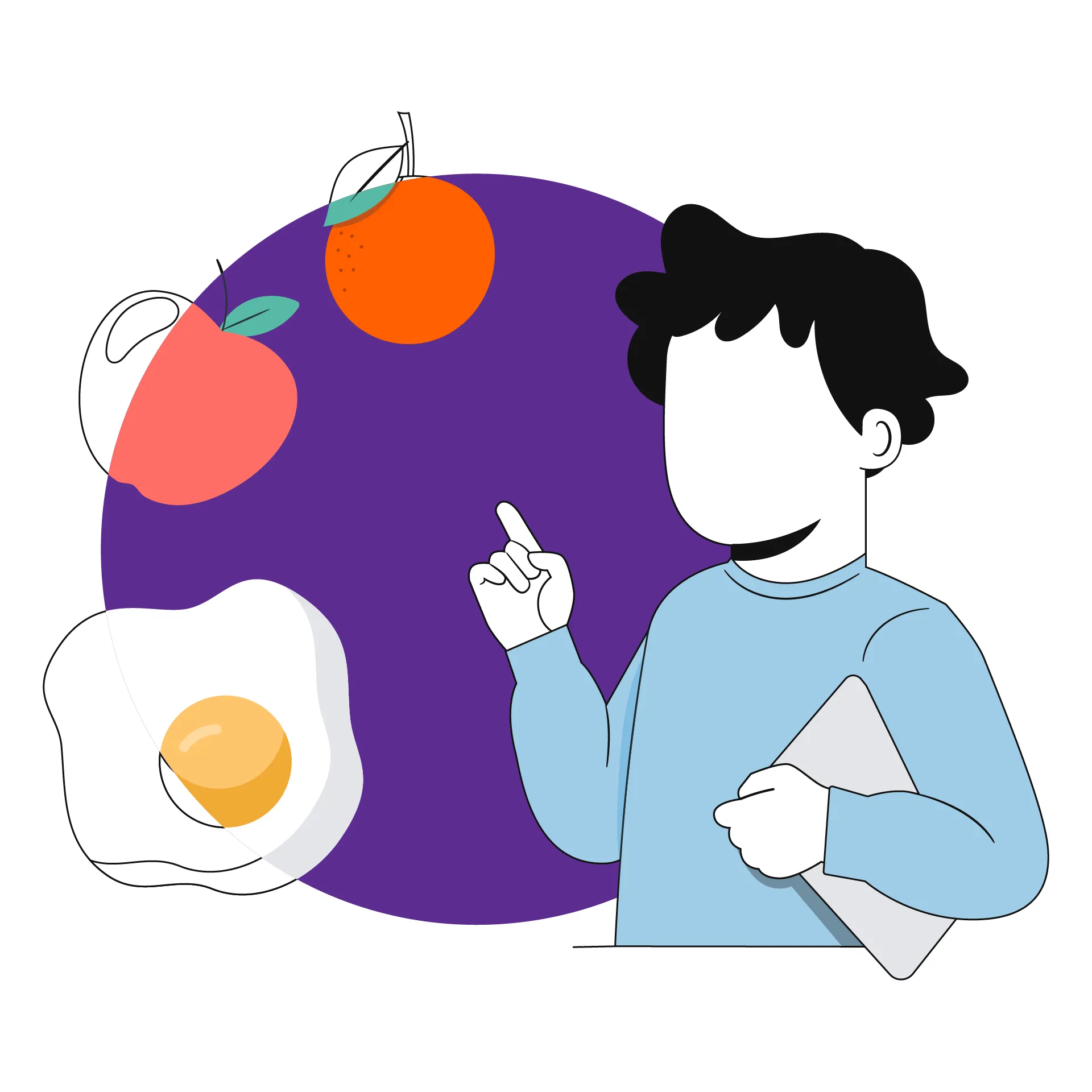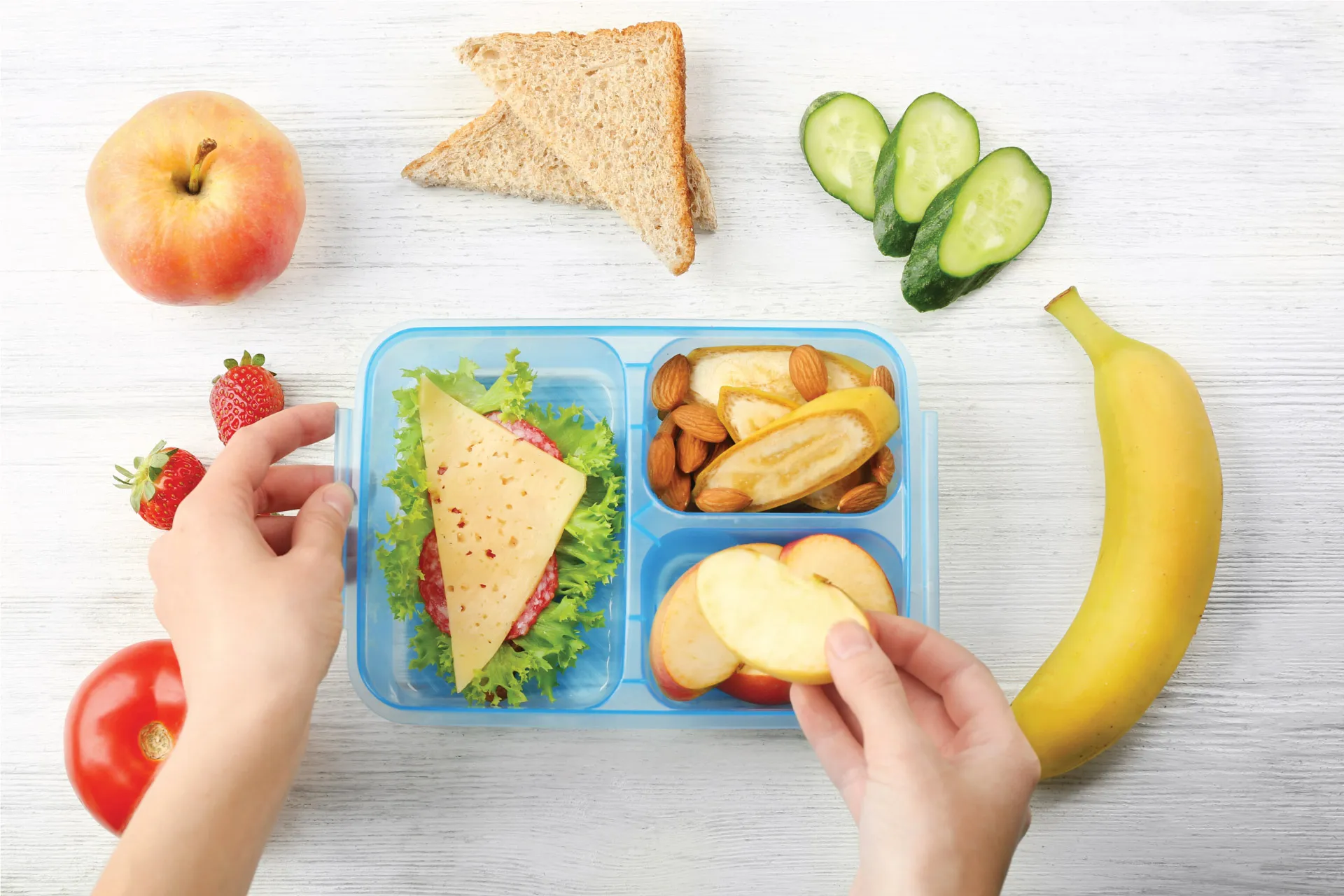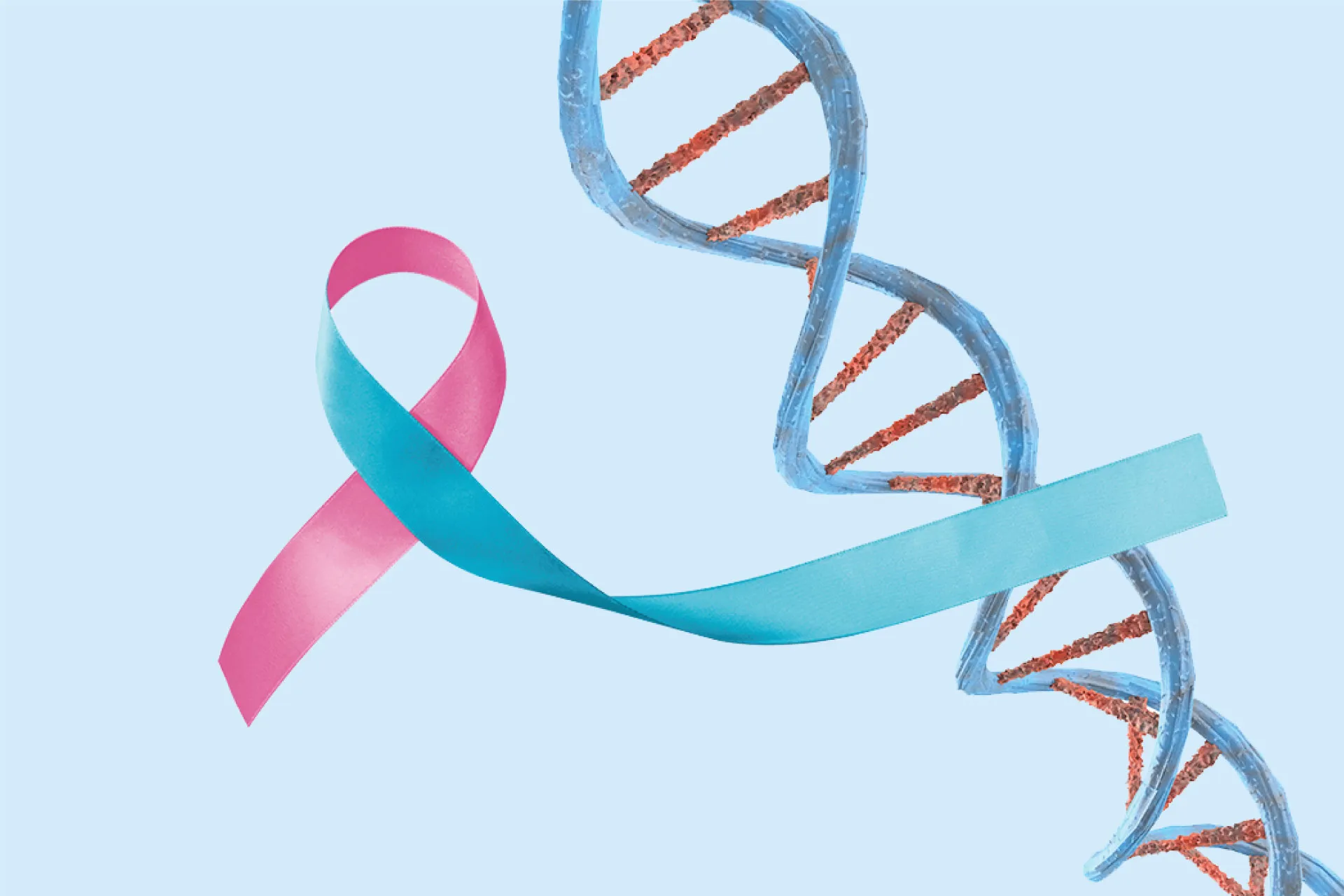Paediatrician | 6 min read
Balanced Diet Chart for Kids: Best Ways to Maintain It
Medically reviewed by
Table of Content
Synopsis
Children are prone to depleting their energy through vigorous physical activity. Kids are still going through a period of rapid growth, and consuming the correct number of nutrients is essential. Parents need to think about feeding their children nutrient-dense foods with protein. Hence, it is necessary to follow a balanced diet chart for kids.
Key Takeaways
- Providing proper nutrition to children helps them develop brain cells and fight infections
- To increase children's immunity, try to promote healthy dietary habits by following a balanced diet chart for kids
- Pediatric obesity and other health problems can result from inadequate nutrition
What does a Balanced Diet for Kids Imply?
A balanced diet is one that includes a variety of foods in the right amounts and ratios to meet the body's needs. It is especially important for kids to follow a balanced diet as it can reduce the overall risk of diabetes by 18%, the possibility of developing metabolic syndrome by 64% and reduce childhood cancer risk. [1]
- A balanced diet chart for kids should be free of toxic calories like trans fats and added sugar
- Children require between 1000 and 1400 Kcal per day. However, the number of calories needed rises with age
- Fresh fruits and vegetables should be served to children
- Fruits should be nutritious and uncooked
- Beans, peas, and sprouts should get served with vegetables
- Providing a variety of grains will help protect against vitamin and mineral deficiencies
- Drinks with reduced or no fat content should also get included in the diet. You can increase energy by drinking milk or 100% pure juice
- Dry fruits are a good energy source; hence must be included in a balanced diet chart for kids. However, their intake should be dependent on the children's growth and activity level
- Fried food must not be a part of the diet because it contains saturated and trans fats that are bad for healthy development
- Diets shouldn't contain artificial sweeteners
- The diet should be well-balanced and tailored to the demands of children
Additional Read: Immunity Booster Vegetables
Balanced Diet Chart for Kids
A balanced diet chart for kids of different age groups contains different meals. A 2 years baby food chart will differ from a 4 to 5 year child food chart. You can also monitor your child’s growth with the help of a height-weight.

Food Chart for a 2-Year-Old Indian Baby
While maintaining a healthy diet is critical for adults, children require more nutrition to support their growth. It is imperative to follow a healthy food chart for kids.
2-Years Baby Food Chart | |||||
Breakfast | Mid-Morning | Lunch | Afternoon | Dinner | |
Sunday | Poha/Upma with vegetables/ sprouts/ peanuts and milk/ curd | Cup of milk and fruits | Curry made with any pulses or rice and curd | Paneer cutlet with milk | Aloo matar and missi roti |
Monday | Dosa or Moong dal cheelaa with added vegetables and curd | Seasonal Fruits | Mixed vegetable curry with chapatti | Fruit milkshake | Chapatti with fried soya chunks |
Tuesday | Egg roll in roti or egg rice | Vegetable soup/fruits | Veg biryani with cucumber sticks | Boiled corn or boiled peanuts + fruit | Vegetable khichdi with curd |
Wednesday | Idli and sambar | Almonds/ raisins | Aloo paratha with curd | Fruits | Boiled chicken with rice |
Thursday | Ragi porridge with chopped nuts | Fruit | Chana dal khichdi with curd | Upma with curd/ milk | Vegetable soup with two cutlets (veg or non-veg) |
Friday | Oats cooked in milk | Fruit smoothie or custard | Chole curry with chapattis | Oats khichdi | Sambar with rice |
Saturday | Vegetable paratha | Fruits and nuts | Paneer pulao | Omelet or cheese chapati roll | Vegetable pulao with curd |
4 to 5 Year Child Food Chart
Meal Hour | Meal Option |
Breakfast | Two slices of whole grain veg bread sandwich, one scrambled egg, poha/idli/upma/stuffed paranthas, one glass of skimmed milk |
Brunch (between breakfast & lunch) | Vegetable or Chicken Soup, Fresh Fruits |
Lunch | One small chapati with ghee, one small bowl of rice, half a bowl of lentils, half a bowl of vegetables, non-veg dish(optional) |
Evening Snacks | A glass of milkshake (Apple/Mango/Banana, etc.), sprouts, fruits |
Dinner | Two chapatis, lentils, curd, one small glass of milk, and chicken (optional) |
Food Items To Limit
A balanced diet chart for kids must not contain food items like Boxed mac 'n cheese, microwave popcorn, processed meats, canned tomatoes, kid's yoghurt, sugary cereals, apple juice, honey, sports drinks, flash-fried frozen finger foods and raw milk. Try to keep your child away from these. However, it is important to get a paediatrician's consultation and make sure what you feed your child is suitable for them or if they have any allergies.

Tips to Maintain Balanced Diet Chart For Kids
- Be a positive role model for your youngster to follow. Eat the same nutritious dishes at communal mealtimes.
- Do not advocate eating fatty and sugary snacks between meals. For kids to snack on between meals, keep lots of healthful items on hand, like fruits, fresh veggies, low-fat crackers, and yoghurt.
- Do let kids make their own food choices based on their natural appetites.
- Provide kids with a range of fruits and vegetables starting at a young age to encourage them to love them.
- Children under five years shouldn't drink skim or milk with less than one percent fat unless their doctor specifically orders it. A balanced diet chart for kids must have extra calories that whole milk provides.
- Do involve kids in meal preparation. Children may not learn to appreciate cooking if parents generally eat ready-made meals.
- Avoid adding extra sugar to foods and beverages.
- Avoid giving children too much salt by adding it to their food or setting the salt shaker out of the table.
- Young children under five years should not get nuts since they could suffocate. As long as the youngster does not have a nut allergy, peanut butter and chopped nuts are acceptable.
- Avoid making kids eat more than they want.
- Avoid offering food as a reward.
- Avoid making kids feel bad about eating any food.
Food Items You can Easily Consume
Eggs
Eggs are one of the few foods that naturally contain vitamin D and are a great source of protein.
Dairy
Milk and milk products provide a good source of protein, carbs, critical vitamins (A, B12, riboflavin, and niacin), as well as minerals like calcium, phosphorus, and potassium.
Oatmeal
It is a great protein source and low in fat. A balanced diet chart for kids must contain nutritious meals that promote overall growth.
Blueberries
They enhance cognitive function and reduce the incidence of diabetes and heart disease.
Nuts
A variety of nuts can be a fantastic source of plant-based protein, fibre, vitamins, and healthy fats that are crucial for your child's growth and development.
Fish
Fish is a fantastic source of vitamin D and Omega 3 fatty acids, which are crucial for your child's brain development and can lower their risk of contracting several ailments.
Green Vegetables
Leafy vegetables are rich in dietary fibre, folic acid, vitamin C, and potassium, which can promote bone health, speed up digestion, and lower your risk of developing serious illnesses.
Additional Read: Egg Nutrition Facts
An important aspect that affects a child's health from infancy to adulthood is diet during childhood. The physical, emotional, and mental development of children is greatly affected by nutrition. A child’s proper growth is aided by following a balanced diet chart for kids and regular physical activity.
Visit Bajaj Finserv Health if you have any questions about your child's dietary needs. You can make a quick online doctor consultation to help adopt a sensible strategy for your child's well-being.
References
- https://www.ncbi.nlm.nih.gov/pmc/articles/PMC7071223/#:~:text=The%20overall%20risk%20of%20diabetes,those%20with%20the%20lowest%20DASH
Disclaimer
Please note that this article is solely meant for informational purposes and Bajaj Finserv Health Limited (“BFHL”) does not shoulder any responsibility of the views/advice/information expressed/given by the writer/reviewer/originator. This article should not be considered as a substitute for any medical advice, diagnosis or treatment. Always consult with your trusted physician/qualified healthcare professional to evaluate your medical condition. The above article has been reviewed by a qualified doctor and BFHL is not responsible for any damages for any information or services provided by any third party.





